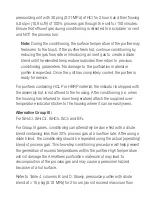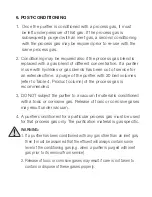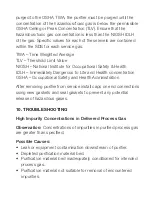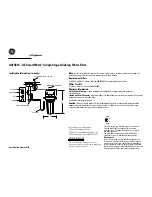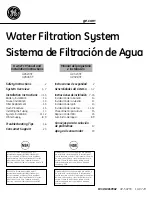
Note:
If the surface temperature of the purifier feels very warm to the
touch at any time during the installation or conditioning procedure,
immediately stop gas flow, recheck for leaks and recheck that the
contents of the gas cylinder / gas source match the intended process
gas for use in the purifier (as per the product part #). If no leaks are found
and the cylinder contents are correct, then resume gas flow.
Group II:
For Air, O
2
, N
2
O, NH
3
, CO
2
, and SO
2
.
Refer to Table 4, columns A and D, for the minimum volume of process gas
to flow through purifier and the maximum flow rate not to be exceeded
during conditioning. As an example, condition a Gaskleen
®
PG550 Purifier
for O
2
service by flowing 2.0 slpm (4.2 scfh) of 100% process gas through
the unit for 60 minutes.
Note:
During the conditioning, the surface temperature of the purifier may
feel warm to the touch. If the purifier feels hot, continue conditioning by
reducing the gas flow rate or introducing an inert gas to create a dilute
blend until the elevated temperature subsides then return to previous
conditioning parameters. No damage to the purification material or
purifier is expected. Once the unit has completely cooled, the purifier is
ready for service.
Group III:
For HCl, HBr, CCl
4
, BCl
3
, Cl
2
, SiH
3
Cl, SiH
2
Cl
2
, SiHCl
3
and SiCl
4
.
Slowly pressurize the purifier with 100% process gas and hold at line
pressure ≥ 15 psig (0.10 MPa) for two (2) hours. Refer to Table 4, columns
B and D, for the minimum volume of process gas to flow through purifier
and the maximum flow rate not to be exceeded during conditioning. As an
example, condition a Gaskleen
®
PG2400 Purifier for HCl service by
















